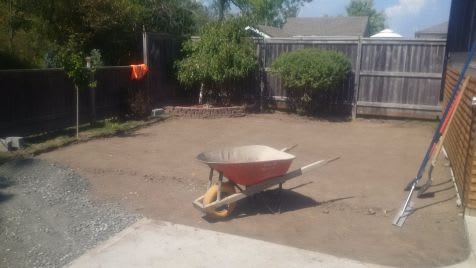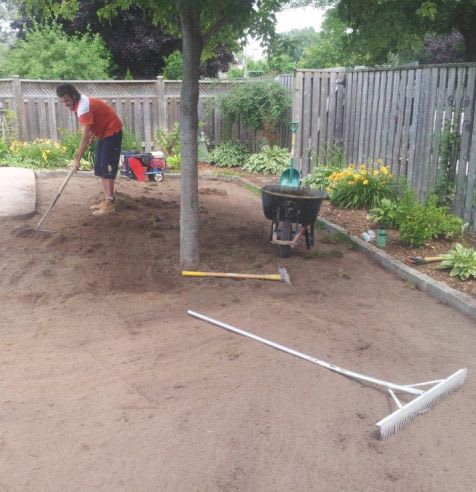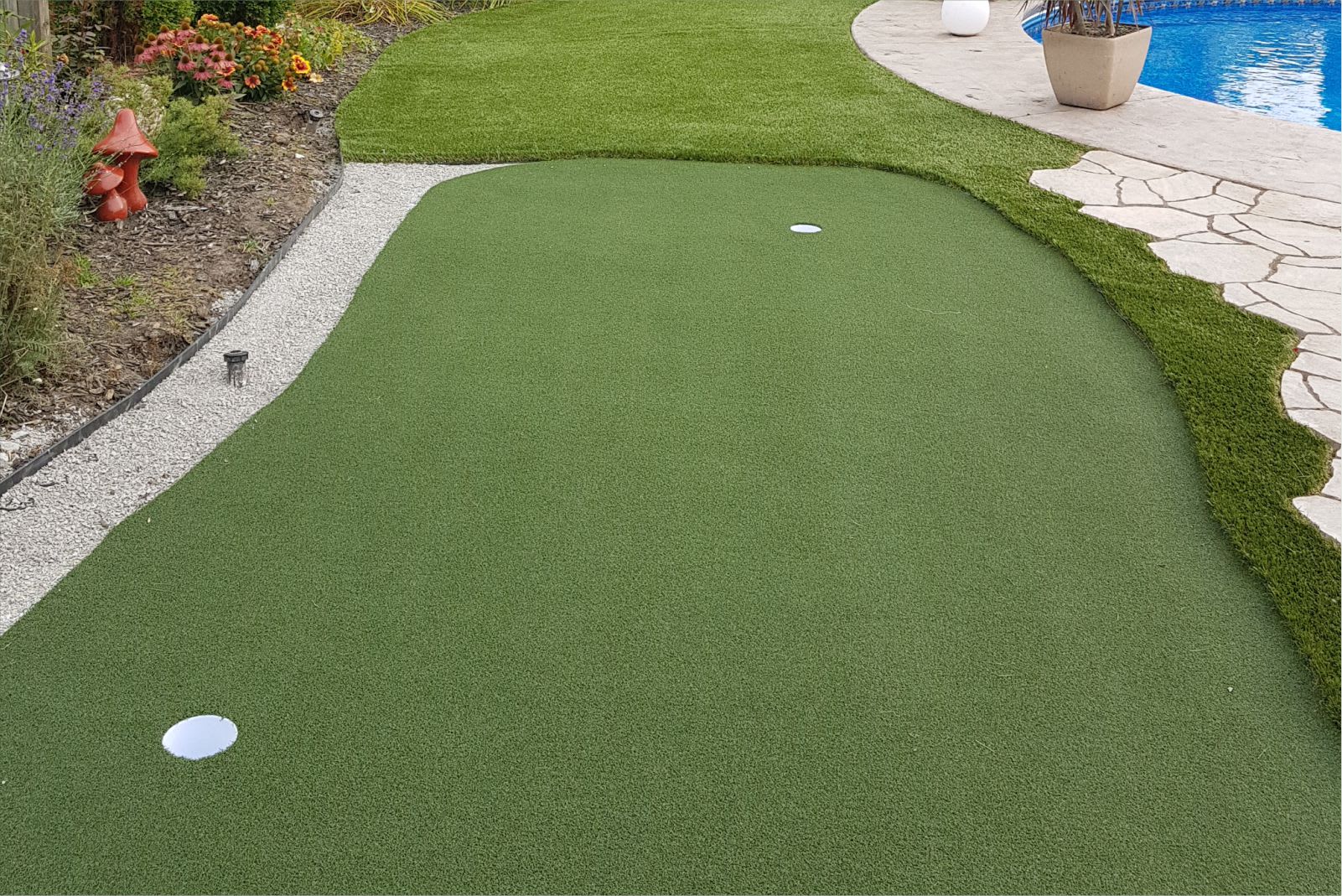One last project to weekend freedom, TNSS has provided you with the instructions to prepare and install artificial turf yourself -- perfect for the do-it-yourself landscaper.

Before You Start:
Tools Checklist
- Shovel, Rake
- Wheelbarrow
- Tape Measure
- Notched trowel
- Vibrating Compactor
- Level
- Roller
- Straight Edge
Material Checklist:
- Landscape turf
- Seaming tape
- Adhesive
- 6” Ardox nails
- ¾” Crushed Gran “A” Non-Washed
- Limestone Screenings

Preparing the Base for Landscape Turf
- You can spray your lawn to kill the roots or you can rent a sod cutter to remove the vegetation. You will need to remove approx. 4” of vegetation. If you have a small area you can always hand dig and remove the vegetation. If you have a cement walkway or a border, make sure that you lay a piece of the artificial turf down prior to completing the excavation to get the correct height needed for the turf.
- The typical depth needed to be removed is 4”
- You will need to spread and level approximately 2” of ¾” Gran “A” Non-Washed. Lightly water and compact using a vibrator motor. Once compacted then apply 2” of Limestone screenings. Use a rake to spread and level accordingly. Once leveled slightly water the area and again compact.
Installing the Artificial Turf
- Roll the turf out and dispose of the tube.
- Drag in to position and if a seam is needed make sure the turf is all laying with the fibres going in the same direction.
- Trim off the mfg edge on each side of the roll. Always cutting from the back to ensure you do not cut the fibres.
- When a seam is needed, after you have aligned the two pieces of turf make sure that the gap between the two pieces is close to the width of the rows of fibre on the backing. (Measure the gap between the rows of fibres first) then leave this gap between the two pieces being seamed. Once you have this done for the entire length of the seam, fold back one edge approximately 1 foot back onto itself. Secure using weight or you can use nails to tack the turf in position. Repeat this procedure on the opposite side of the turf.
- Now you can roll out the cordura that is used to apply your adhesive on. The cordura gets nailed in place using roofing nails. Make sure there are no ripples in the seaming tape.
- Using the correct adhesive for the application spread at a rate of no more than 10-12 feet of coverage. Use your notched trowel and spread over the entire area of the cordura. Once you have spread the adhesive you can now bring both sides of the artificial turf together and meet them in the middle of the cordura. Use a carpet tractor and roll over the seam, be careful not to trap a fibre in the adhesive.
- Once you are happy with the seam you can then use the 6” ardox nails. Open the fibre and hammer the nails in through the turf again ensuring not to trap the fibre. Fluff the fibres over the nail head to cover. Repeat this process by staggering the nails approximately every 18” apart. Making sure you have even number of nails on each side of the seam.
- Repeat this process for the remaining portion of the seam.
- The grass should be trimmed to fit the area that you are working on. Making sure you pin the outside edge to prevent any wind from getting under it and lifting it.
Infilling the Artificial Turf
- Ensure the fibres are upright. You can use a firm bristle boom and push against the grain or you can rent a power broom to stand the fibres upright.
- Depending on the face weight will determine the amount of infill that will be required.
- The turf should be infilled with alternating layers of sand and or rubber. After each drop make sure you go back and broom the area standing the fibres upright. You do not want to trap the fibres with the infill.
- Generally, you will want to fill the turf between 40-50 % of the height of the fibers.
- After applying the final amount of infill use a garden house and lightly wet the area to remove any static from the turf.

